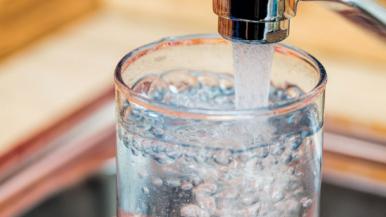What to do if you're worried about lead in your drinking water
Aside from routine observations around National Lead Poisoning Prevention Week, which comes around every October, health care professionals and Chicago-area residents have the topic on their minds more than usual, because high lead levels have been discovered in the water many Chicagoans drink.
In early 2018, the Chicago Tribune analyzed Chicago's drinking water and discovered that 30 percent of 2,797 homes where tap water was sampled had lead concentrations higher than 5 parts per billion (ppb), the highest level the US Food & Drug Administration allows in bottled water. Nearly 70 percent of homes tested had some lead in their water. The limit set by the Environmental Protection Agency for lead in tap water is 15 ppb. There is no known "safe" level.
City parks in Chicago have a lead problem, too. Tests found dangerously high lead levels in many of Chicago’s 1,250 outdoor drinking fountains — two at Gompers Park returned lead levels of 75 and 50 ppb, for example. Officials at the Chicago Park District tried running the fountains continuously to flush out lead, but later decided to turn off about half the fountains and marked them for removal, the Tribune reported.
A continuing crisis in Flint
Of course, Chicago is not the first city to deal with this issue.
In 2016, lead levels went so high in Flint, Michigan's water that pipes corroded and some area residents got sick — a public health crisis that led to the declaration of a federal state of emergency.
Lead poisoning is serious in both adults and children, because lead can keep the body from absorbing iron, calcium and other necessary minerals. But in children, lead poisoning can also seriously damage developing muscles, bones and organs, including the brain, and impair intellectual development. So parents need to be especially vigilant.
How to tell if your water is safe, and keep it safe
Banu Prasad Myneni, DO, a family practitioner with Rush Oak Park Hospital, treated a number of children who had ingested lead when he was previously in practice in rural Ohio. He has some advice for Chicagoans who are concerned about those recent reports about the presence of lead in the city's drinking water.
"To be proactive about it, talk with your local health department. They can be great resource," Myneni says. "Check with your local government as well to see what kind of pipes you have and if there have been any repairs. That's a great place to start."
The EPA offers these additional tips to residents concerned about lead in their water:
- Have your water tested. Chicago residents, call 311. Many public water systems will test drinking water for residents upon request. The State of Illinois' drinking water website has information as well.
- Be aware of any work that could disturb your lead service line, such as water main or service line repairs or replacement. This disruption can send more lead into the drinking water.
- Use only cold water for drinking, cooking and preparing baby formula.
- Run water before using it for drinking or cooking. Add some time if the home has a lead service line. If water has not been drawn from a tap for several hours, flush it for at least 30 seconds to one minute, and then fill a container with water from that cleared tap, store it in the refrigerator, and use it for drinking and cooking throughout the day.
- Don't worry about clearing the water you use for showering. You won't absorb lead through your skin.
- Consider purchasing a water filter certified to remove "total lead." The EPA has a page about water filtration systems for homes on its website; they may use distillation, reverse osmosis or carbon filtering. NSF, an independent certification organization, has established standards for such devices.
- Regularly clean and remove any debris from faucet aerators to clear out trapped lead particles.
- Purchase lead-free faucets and plumbing components.
- Consider having your lead service line replaced. Until 1986, when Congress outlawed the used of lead in water pipes, Chicago's plumbing code required the pipes that carry water to single-family homes and small apartment buildings to be made of lead. The city requires individual property owners to maintain those "service lines." According to the Tribune, the mayor's office has said that it falls to homeowners, not the city, to replace lead service pipes at their own expense, if they choose to do so.
Drinking bottled water may be an option, too, but Mynenu recommends staying away from plastic bottles made with Bisphenol A (BPA) or other harmful chemicals.
Myneni also advises concerned parents to have their children tested for lead; that will at least allow their pediatrician or other practitioner to establish a baseline for lead levels in the child.
Many public water systems will test drinking water for residents upon request.
Take precautions but remain calm
Until the latest spate of news stories about lead in the water supply, lead paint chips in older homes appeared to present the greater risk for children in the Chicago area. It probably still does. The use of lead paint was banned here in 1978, but the paint persists on the walls and woodwork in many homes, and is a particular threat in poorly maintained structures.
Amid these concerns, however, Myneni is able to offer some reassurance: "In Elmwood Park, where I practice now, I do lead testing, and I have yet to see an abnormal lead level in any of the children in my patient population. So while it's always a good idea to take reasonable precautions, don't make yourself sick worrying about lead in your water."




